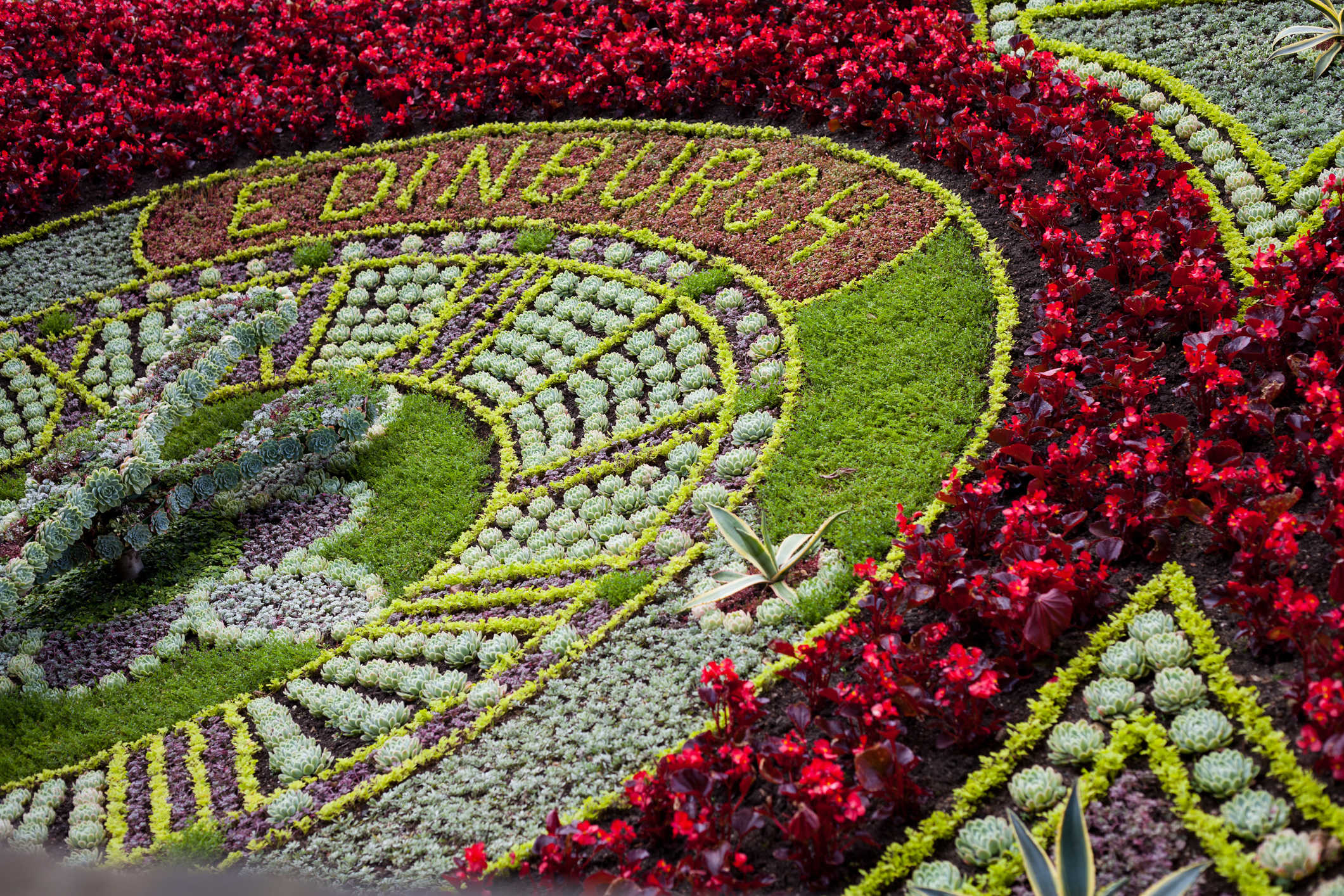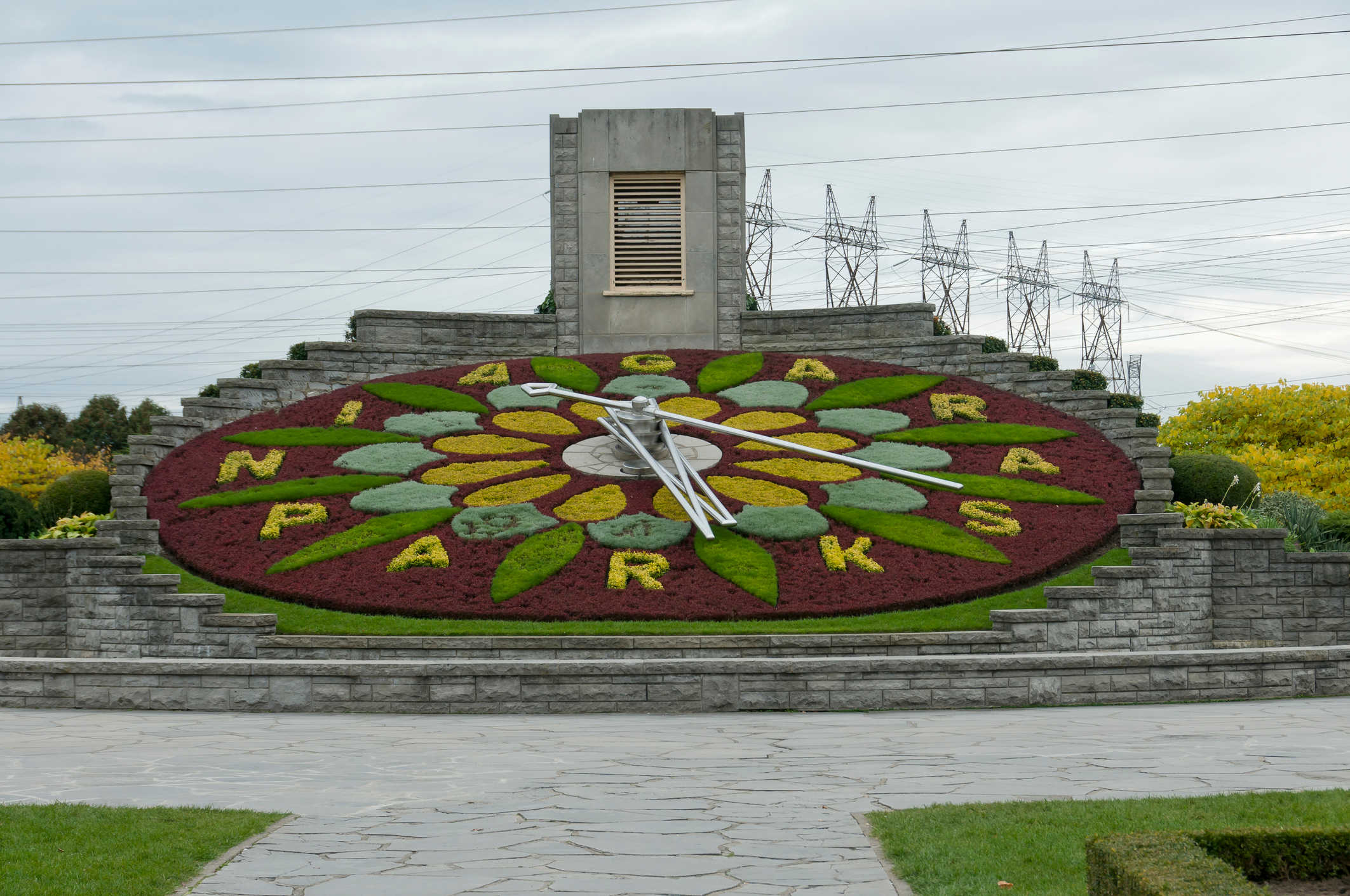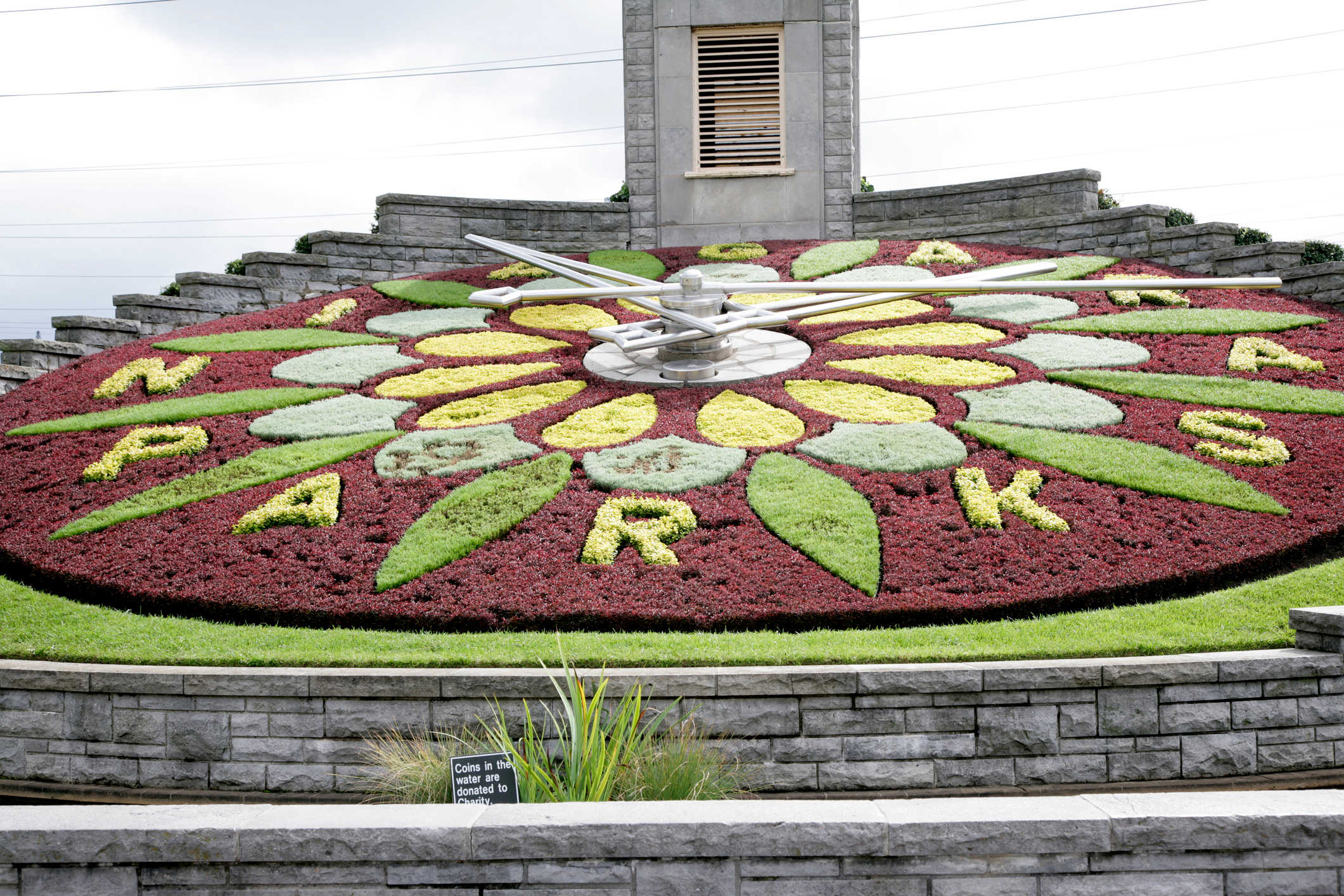
Floral Clock
Last updated on May 26, 2025 by I T
For over seven decades, the Niagara Floral Clock has captivated visitors from around the world. Since it was first installed in 1950s, this remarkable timepiece continues to draw crowds to it! People come to marvel at its intricate beauty and craftsmanship.
Whether you’re taking a leisurely stroll along the Niagara Parkway, or working off a hearty meal from Clifton Hill… Or you are simply seeking the perfect photo opportunity- the Floral Clock offers something magical for everyone!
Beyond its visual splendor, the Niagara Floral Clock holds deep cultural significance. Each carefully curated design tells a story through its thoughtful selection of flowers, colors, and patterns. The floral arrangements symbolize everything from seasonal transitions and local heritage to universal themes of growth, renewal, and the passage of time.
What makes this horticultural masterpiece so extraordinary? What invisible forces continue to draw thousands of visitors season after season? Let’s discover all the secrets behind this beloved landmark and learn why the Niagara Floral Clock remains one of the region’s most enduring attractions.
The Design for the Floral Clock
The Niagara Floral clock is situated just about 9 kilometers, North of the bustling Clifton Hills. Drive down the breathtaking Niagara Parkway enroute to Niagara-on-the-Lake and stop at the world-famous Floral Clock.
The design inspiration for the Floral Clock is based on a similar clock at the Princess Street Gardens in Edinburgh.

The clock (pictured above) was built in 1903. After witnessing the clock firsthand during a business journey, Dr. Richard L. Hearn, former chairman of Ontario Hydro, spearheaded efforts to bring this concept to Niagara. Spanning 40 feet across, Niagara’s Floral Clock became the world’s largest when it launched in 1950. It is approximately 3 times the size of the clock in Edinburgh!
Created as Ontario Hydro’s signature floral attraction, it uniquely used the twelve letters of “ONTARIO HYDRO” to designate each hour marker. This was replaced in 1977, when the Niagara Parks Commission took over the maintenance of the Floral Clock display. Now, the text reads “Niagara Parks” instead of the original wording on it.

Today Niagara Parks Commission takes care of the flowers planted on the Clock’s face- whereas the Ontario Hydro has kept the mechanism of the clock in perfect order!
Maintaining the Clock
The flower arrangements, design and choice of flowers on the face of clock is changed twice each year. In total the Floral Clock features around 15,000 to 20,000 colourful carpet plants! The layout and designs on the face are designed by horticulturists and the students at the Niagara Parks School of Horticulture.
In the Springtime, they have their Voila feature. And Alternanthera arrangements along with green and grey forms of Santolina Sage during the Summer and Fall. For creating contrast within the color palate, they might use California Golden Privet and/or the Blue Festuca Grass.
In the Winter time, when there are not many blooms out there, the clock’s face is a bedrock of colourful stones, instead!

Did you know that the Floral Clock’s face design in decided on 2 years ahead of time!? There is actually a place where you can go and take a look at the yesteryear’s designs…
The Floral Clock Tower
The clock’s tower, standing tall behind the clock, houses the Westminster Chimes that chime to mark every quarter hour. When the tower door is open, you can take a look at the mechanism that keeps the hands moving. The mechanism is very similar to the large scale clocks in churches or other public buildings. The clock’s timekeeping system utilizes a synchronized electric motor connected to a master time source, ensuring the Floral Clock remains in perfect harmony with standard time.
What makes the Floral Clock truly remarkable is how the mechanical system seamlessly integrates with its living components. The clock’s face itself is constructed on a sturdy metal framework that can support the considerable weight of soil, plants, and the intricate irrigation system required to maintain the floral displays. This framework is designed with precise measurements to ensure that as the hands move, they clear the varying heights of different plantings throughout the seasons.

All- Season Durability
Given that the Floral Clock is placed outdoors, the clock mechanism must withstand extreme weather conditions. There is wide range in temperatures from the harsh unforgiving Canadian Winters to warm and humid Canadian Summers. To prevent moisture damage, the internal components are housed in weatherproof casings with proper drainage systems. The Floral clock’s accuracy remains unaffected by temperature-resistant materials which ensure that expansion and contraction due to seasonal temperature changes don’t take place.
A Couple of Fun Things!
As we mentioned earlier, the Floral Clock first came into operation in the year 1950. Stepping inside the Tower room, you will see a wall of pictures on the left. There you can take a look at the Floral Clock designs over the years. The display starts at the year 1950, when the Floral Clock first started its operations. Over the decades, you will be able to see how many gorgeous designs came and went, as a part of the Niagara Falls cultural history!
Also- did you know that there is water trough surrounding the Niagara Floral Clock!? Legend has it that this is wish-fulfilling water trough! So the next time you head there- flip a coin and try your luck there!!!
In Summary…
So where should the Niagara Floral Clock fall in your itinerary? We think it will be a perfect thing to pair with the most adventurous attractions like Journey Behind the Falls, Zipline to the Falls and even the Hornblower Boat Cruise!
After a day spent busy with all those high energy attractions- a stroll in the park looking at the Niagara Floral Clock is just the respite you might need!
Will you go check out the splendor of this Niagara Falls attraction…? Let us know in the comments below!
.





